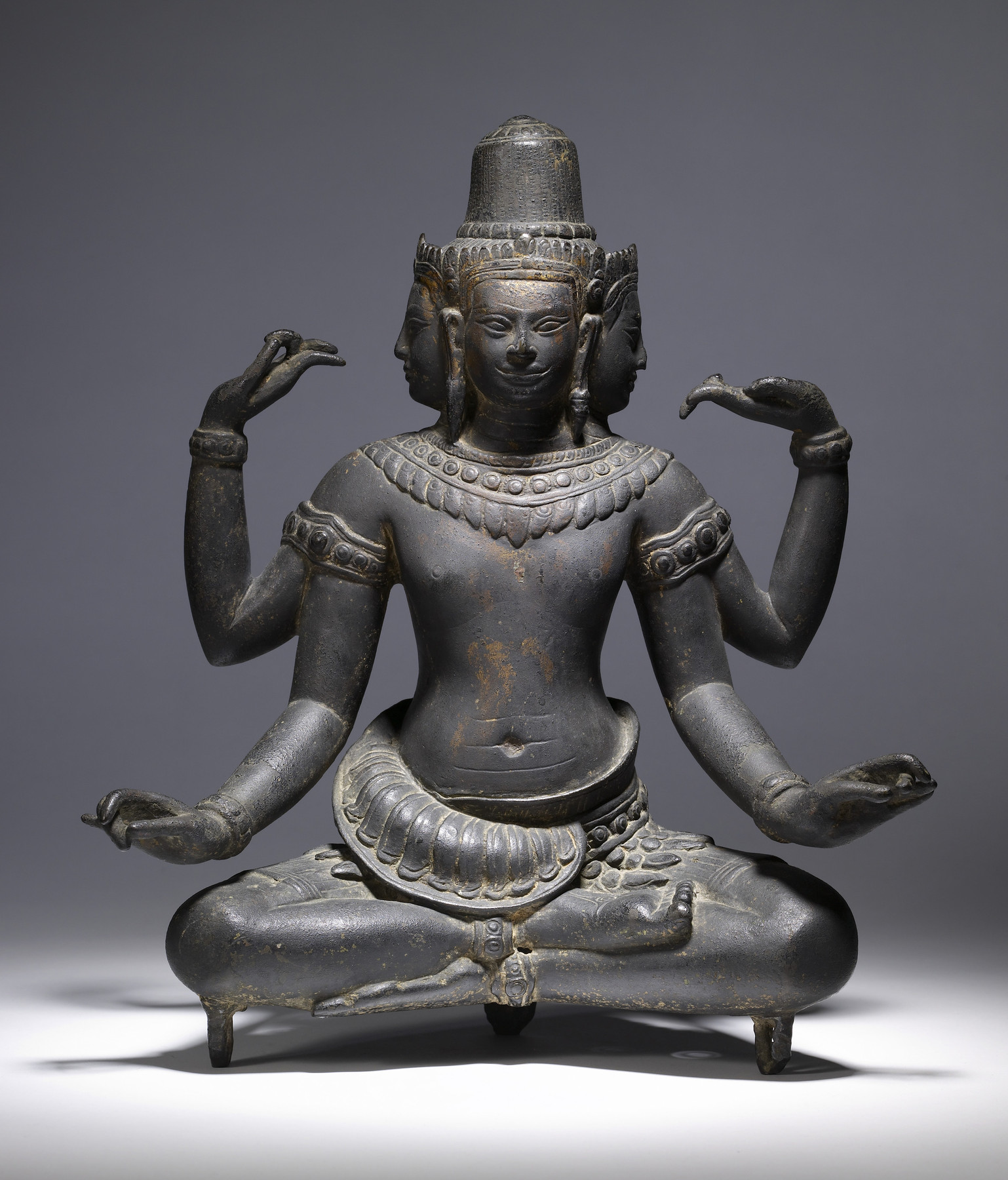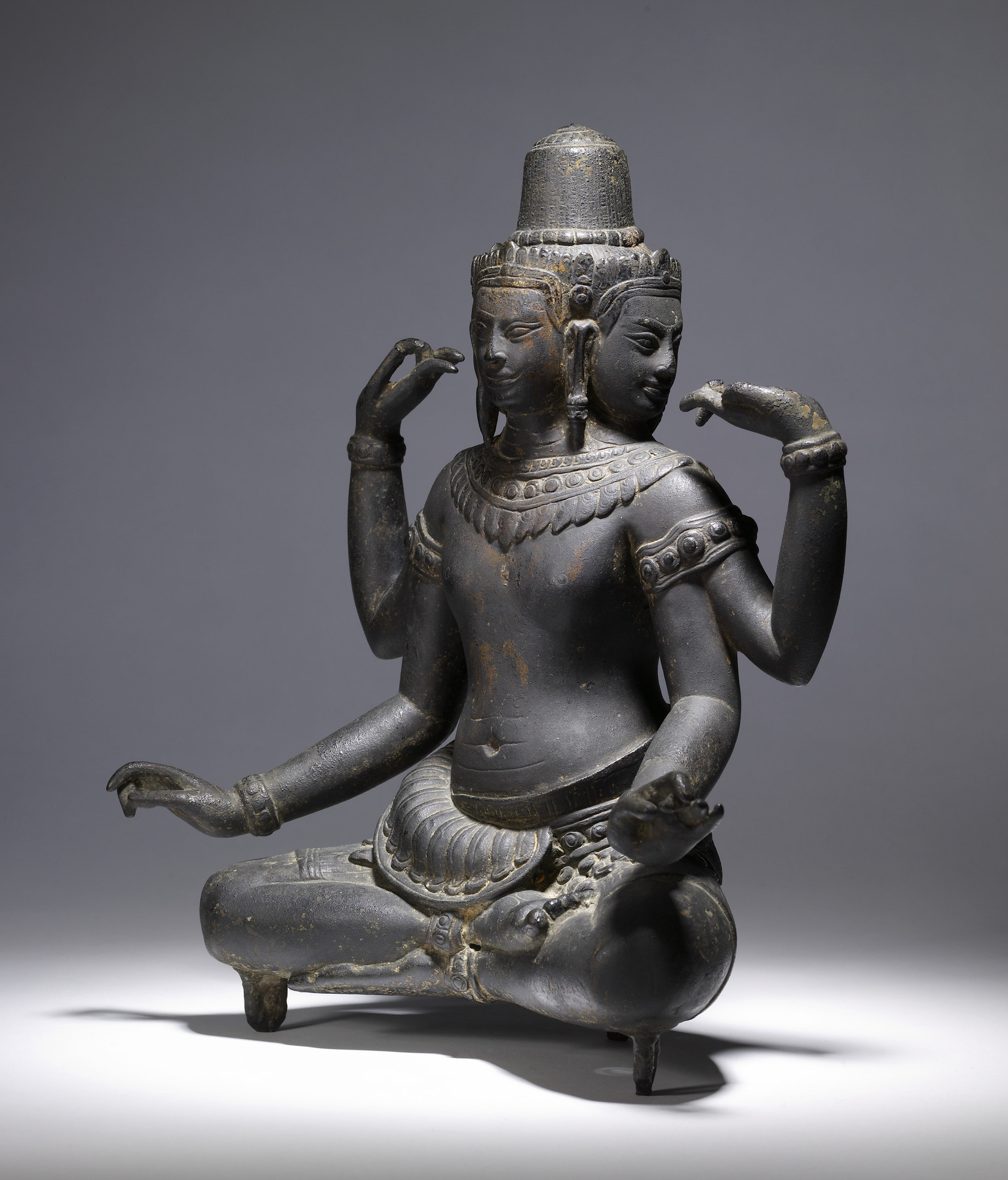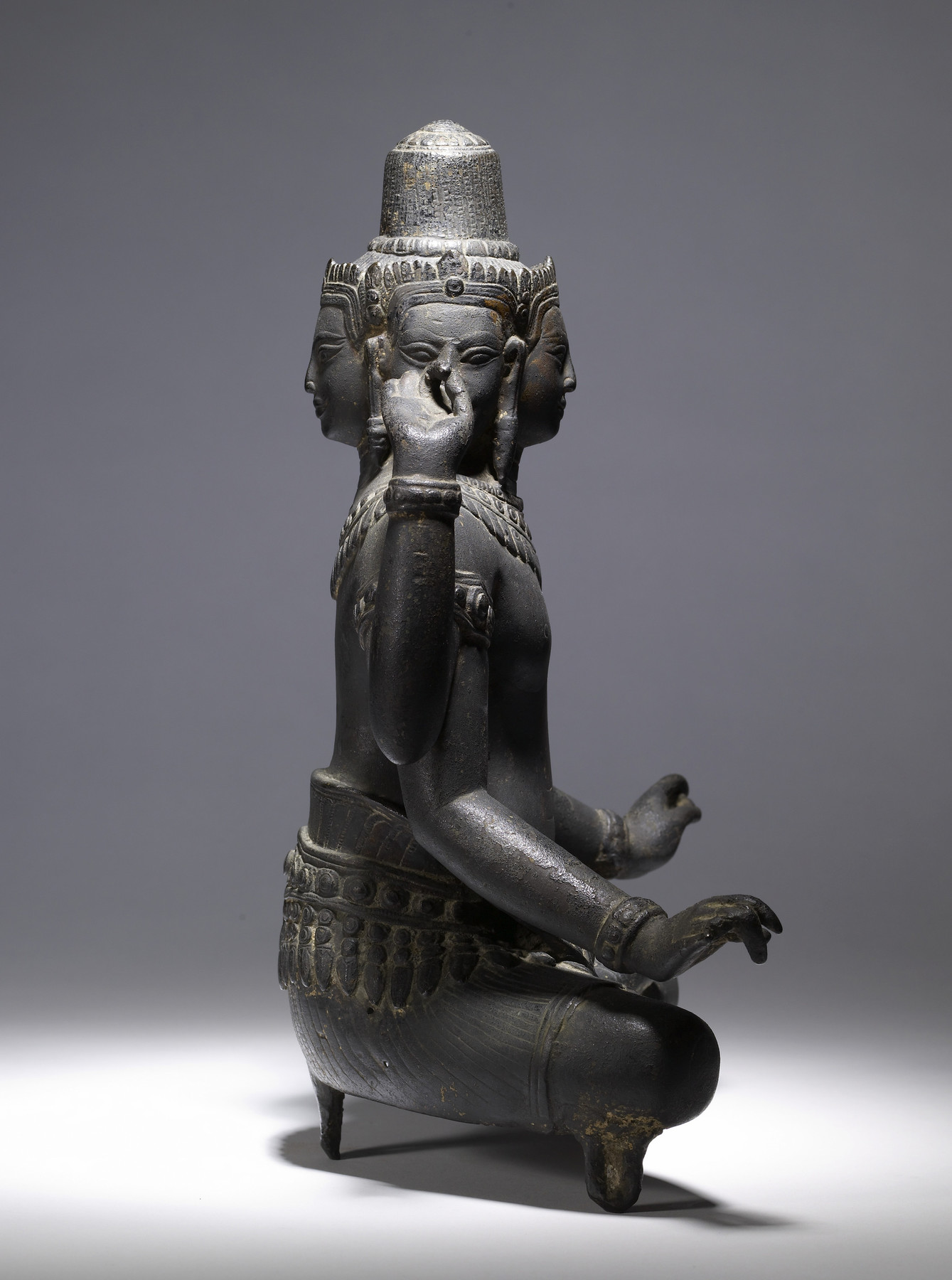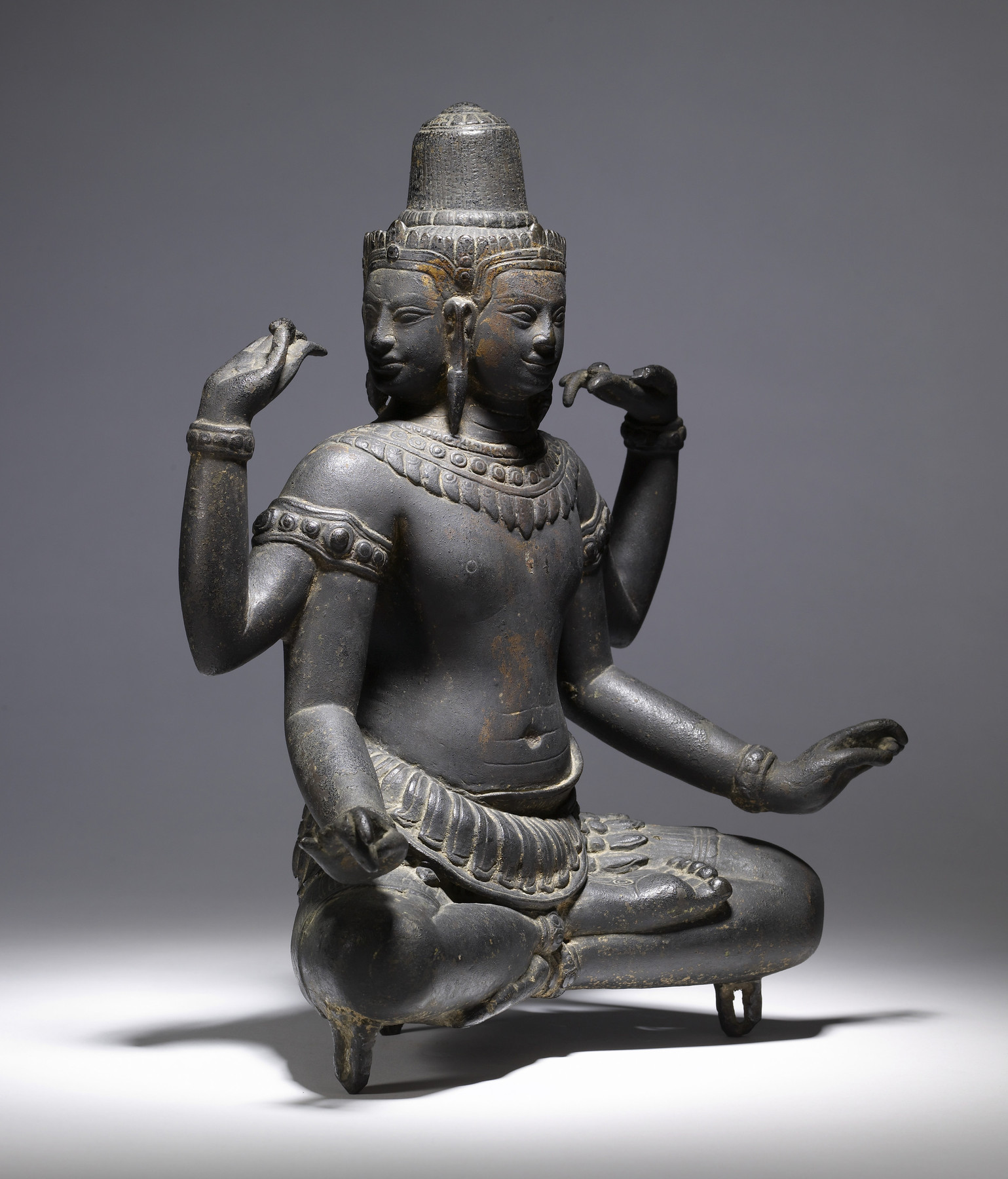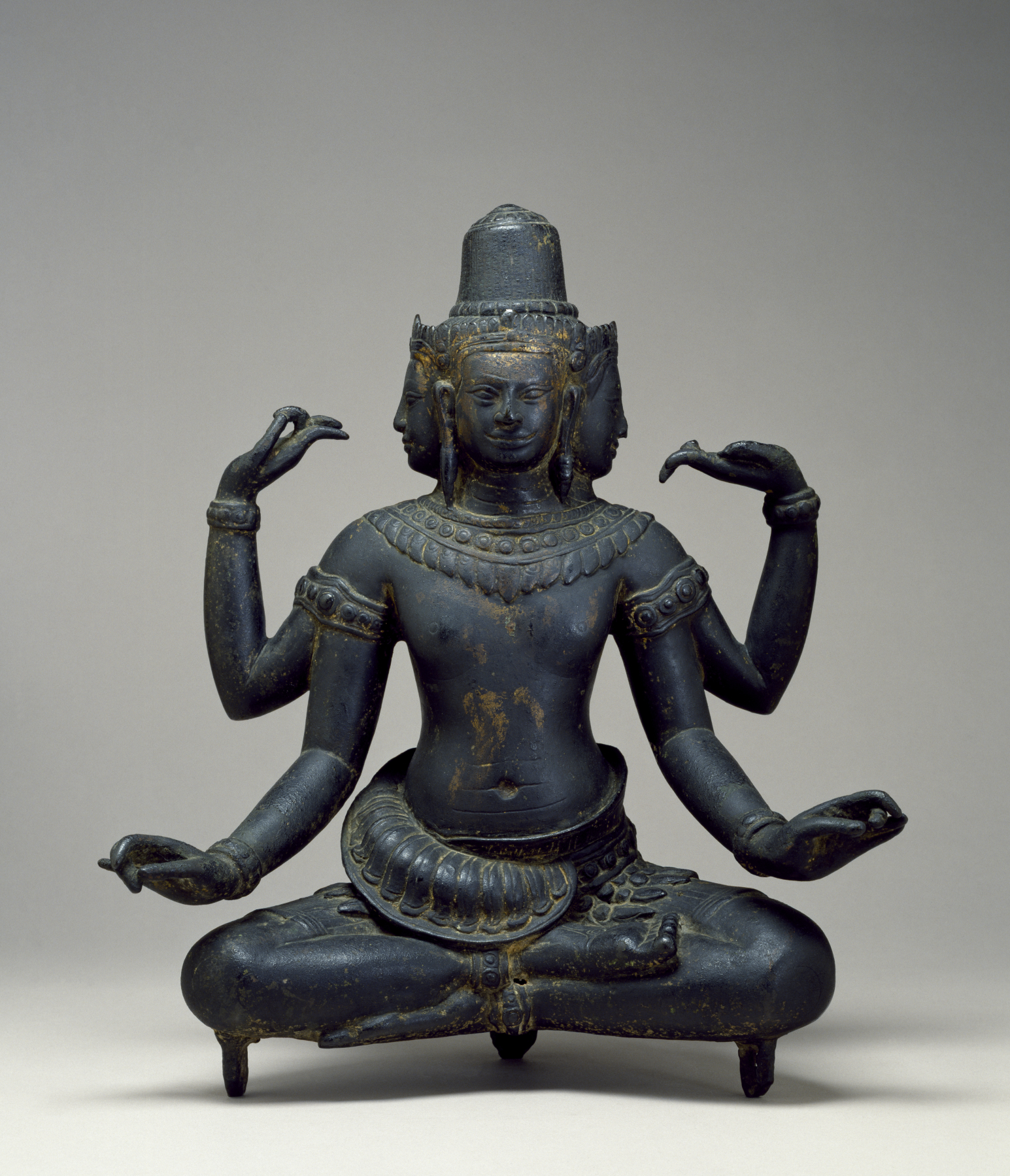Seated Brahma
(Southeast Asia )
The god Brahma is best known for his role in the Hindu pantheon as creator of the universe, but he also has a place in the Buddhist traditions as a protector of the "dharma" (Buddhist teachings). This sculpture was most likely made during the reign of the Buddhist king Jayavarman VII (r. 1181-ca. 1218), when many Hindu deities were incorporated into the practices of Khmer Buddhism. Brahma's four faces, which look in all four directions at once, signal his omniscience.
Provenance
Provenance (from the French provenir, 'to come from/forth') is the chronology of the ownership, custody, or location of a historical object. Learn more about provenance at the Walters.
Brahmanical Temple (Bot Phram), Bangkok; Alexander B. Griswold, Monkton, Maryland, July 1949 [1]; by bequest to Walters Art Museum, 1992.
[1] Presented to the Breezewood Foundation, December 1960, inv. no. 490 (originally no. 863)
Exhibitions
| 1995 | Unearthly Elegance: Buddhist Art from the Griswold Collection. The Walters Art Gallery, Baltimore. |
Geographies
Cambodia, Angkor (Place of Origin)
Measurements
H without tang: 11 5/8 × W: 10 13/16 × D: 5 5/8 in. (29.5 × 27.4 × 14.3 cm); H with tang: 12 3/8 × W: 10 13/16 × D: 5 5/8 in. (31.5 × 27.4 × 14.3 cm); H on block: 13 1/16 × W: 10 13/16 × D: 5 5/8 in. (33.2 × 27.4 × 14.3 cm); Block H: 1 7/16 × W: 9 × D: 5 1/2 in. (3.7 × 22.8 × 14 cm)
Credit Line
Bequest of A. B. Griswold, 1992
Accession Number
In libraries, galleries, museums, and archives, an accession number is a unique identifier assigned to each object in the collection.
In libraries, galleries, museums, and archives, an accession number is a unique identifier assigned to each object in the collection.
54.2734

